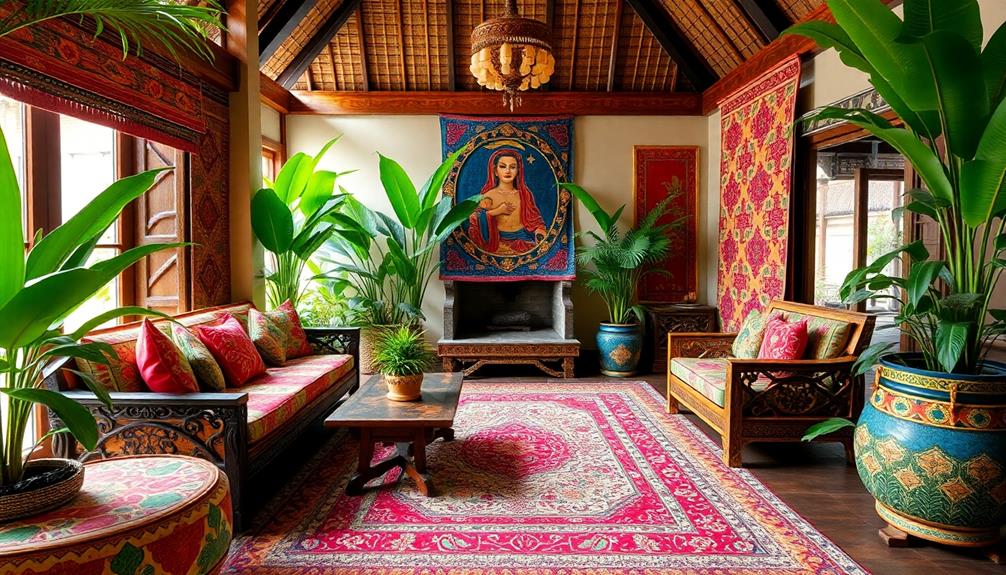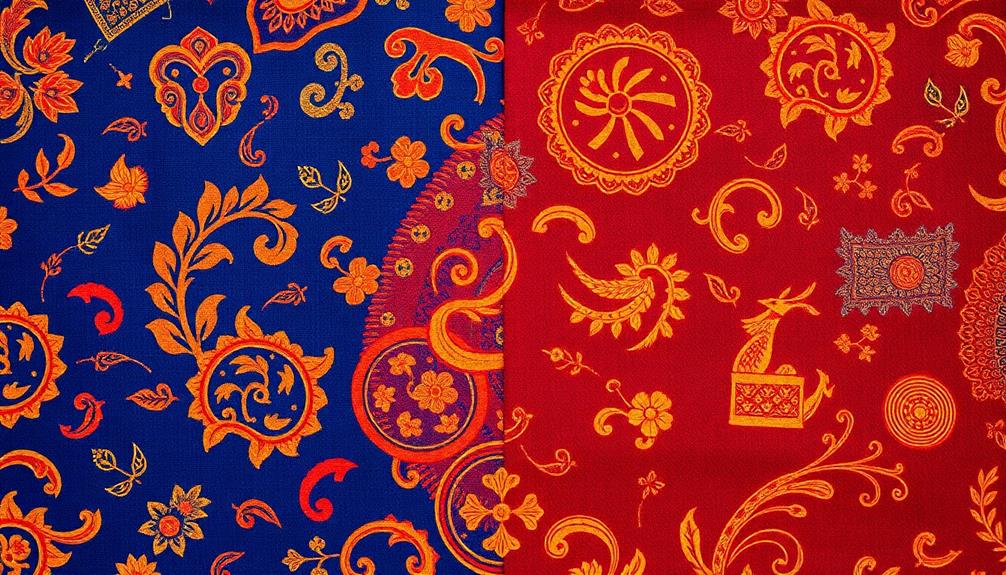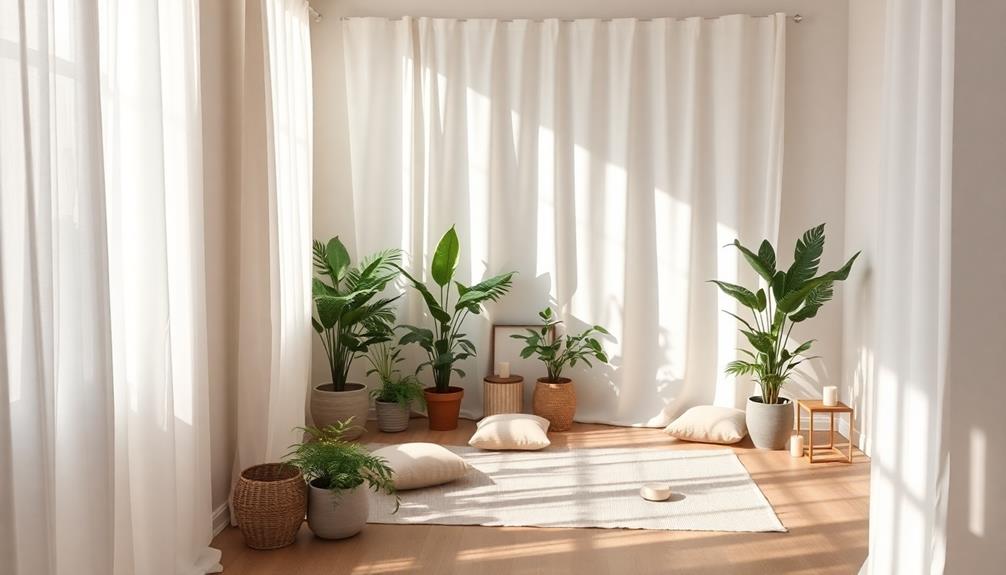The weight of your cutlery can dramatically influence how you perceive taste. Heavier utensils often enhance flavor, making your meal more enjoyable. When you use a metal spoon, for example, you're likely to rate yogurt higher than with a lightweight one. This sensation transference means a heavier fork or knife not only boosts your enjoyment but can also impact how much you're willing to pay for a meal. Fundamentally, the heft of cutlery aligns with expectations about the richness and quality of food. Curious to discover how this affects dining experiences? You'll find more intriguing insights ahead.
Key Takeaways
- Heavier cutlery enhances flavor perception, making meals seem richer and more enjoyable compared to lighter utensils.
- The aesthetic quality of cutlery influences the overall dining experience and expectations of food quality.
- Diners using heavier utensils are willing to pay approximately 15% more for their meals due to perceived value.
- Light cutlery can mislead enjoyment, with studies showing heavier utensils lead to more pleasant tasting experiences.
- Cultural dining norms dictate cutlery use, impacting the perceived value and enjoyment of traditional dishes.
Aesthetic Influence on Dining
When you sit down for a meal, the cutlery you see plays an essential role in your dining experience. The aesthetic quality of your utensils can greatly influence your perception of the meal. Polished, well-designed cutlery enhances the visual appeal of your table setting, making you feel more engaged and excited about what's to come.
For instance, imagine enjoying a beautifully plated dish of Agnolotti served with elegant cutlery; the combination can elevate the overall experience even further.
If the cutlery is mismatched or tarnished, it can create a negative first impression, detracting from the overall ambiance. This attention to detail by the host speaks volumes and shapes your expectations about the food being served.
The shape and color of the cutlery also contribute to your sensory experience. Elegant designs can elevate your mood and enhance the enjoyment of each bite, while less appealing utensils might leave you feeling indifferent about the meal.
Ultimately, the aesthetic elements of cutlery impact not just the dining atmosphere but also how you perceive the quality of the food.
Weight and Taste Perception
When you eat with heavier cutlery, you might notice that the flavors seem richer and more enjoyable.
This effect can be particularly pronounced when enjoying traditional Brazilian dishes like Caldeirada, where the depth of flavor is enhanced by the experience of the meal.
On the other hand, using lighter utensils could trick your taste buds, making the food feel less satisfying than it really is.
This connection between weight and taste perception can greatly shape your dining experience.
Heaviness Enhances Flavor Perception
Heaviness in cutlery markedly enhances flavor perception, transforming the dining experience. When you use a heavier spoon, it doesn't just feel more satisfying; it actually elevates your taste perception.
Studies reveal that when participants enjoyed yogurt with metal spoons, they rated the dish as more pleasant and of higher quality than when they used lighter plastic cutlery. This isn't just about the physical sensation; it's a prime example of sensation transference, where the weight of the utensil influences how you perceive the quality of food.
In the same way that a spooky spider pizza can delight your senses with its festive presentation, the heft of a metal fork can enhance your enjoyment of a rich meal.
Imagine:
- A beautifully crafted metal spoon gliding through creamy yogurt.
- The satisfying heft of a fork lifting a rich, decadent slice of cake.
- The clink of solid cutlery against a fine china plate, enhancing the meal's elegance.
Heavier utensils are often associated with greater flavor intensity and richness, aligning with our expectations of quality.
It's fascinating how the weight of cutlery can influence your willingness to pay more for a meal, reinforcing the psychological impact that heaviness has on flavor perception.
Light Cutlery Misleads Enjoyment
Using lighter cutlery can easily mislead your enjoyment of a meal. When you use plastic spoons or forks, you might perceive the food as denser and potentially more expensive, which can skew your overall taste perception.
Research shows that when participants consumed yogurt with heavier metal spoons, they rated the experience as more pleasant compared to lighter alternatives. This highlights how the weight of cutlery directly affects your enjoyment. For instance, when savoring a classic dish like a Loaded Baked Potato, the utensil weight can influence how you perceive its creamy toppings and overall flavors.
The expectations you have about food quality align with the weight of the utensils you use. Heavier cutlery often leads you to rate the same food items higher. This phenomenon, known as sensation transference, indicates that lighter utensils can diminish your tasting experience. You mightn't even realize it, but when you eat with lightweight plastic cutlery, you could unwittingly lower your enjoyment.
Interestingly, studies reveal that diners using heavier metal utensils are willing to pay 15% more for their meals. This willingness suggests that your perception of taste and value is heavily influenced by cutlery weight.
Cutlery Design and Functionality
Cutlery design and functionality can make a world of difference in your dining experience. The weight of the cutlery greatly influences your taste perception, impacting how you enjoy the food. A heavier spoon might make that yogurt taste richer, while a lighter one could leave you wanting more.
For instance, when enjoying dishes like Chinese Steamed Egg, the right spoon can accentuate its silky texture, enhancing your appreciation of its delicate flavors.
- The sleek curve of a well-designed knife enhances your grip and control.
- A shiny metallic fork glimmers under the light, inviting you to dig in.
- An elegantly shaped spoon cradles the perfect amount of soup, enhancing every sip.
Different shapes and materials of cutlery affect your sensory experiences in unexpected ways. For instance, knives often make food taste saltier compared to forks or spoons, altering your flavor perception. The material properties also play a role; gold and chrome won't impart any metallic flavors, unlike zinc or copper, which can enhance bitterness.
Moreover, the design impacts your eating behavior—using smaller forks could even lead you to consume more food.
Ultimately, optimizing cutlery design not only enhances aesthetic appeal but also enriches your overall dining experience through tactile engagement and sensory stimulation.
Cultural Implications of Cutlery
When you sit down to eat, the type of cutlery around you can say a lot about cultural dining etiquette.
Different cultures have their own rules and social norms regarding how cutlery is used, which can shape your dining experience.
For instance, in Indian cuisine, the choice of cutlery might differ when enjoying a rich dish like Mushroom Masala compared to a street food favorite such as Kathi Roll.
Understanding these nuances not only enriches your meal but also shows respect for the traditions at the table.
Cultural Dining Etiquette
Understanding cultural dining etiquette is essential, as it shapes your experience and interactions at the table. The way cutlery is used varies notably across cultures, influencing not only the dining experience but also your perception of food. For instance, in American dining, you might use a knife and fork simultaneously, while in Europe, switching utensils between hands is the norm.
Additionally, the type of meal being served can also influence cutlery choices, such as using a soup spoon for nutritious blends like nettle and potato soup or a fork for enjoying hearty dishes like slow-cooked pork belly.
- The delicate grip of chopsticks in East Asian traditions
- The intricate designs of ornate forks in formal settings
- The sturdy feel of heavy cutlery in upscale restaurants
The weight of cutlery can affect how you perceive a meal's formality and status. Heavier utensils often signal a more upscale dining experience, enhancing your overall enjoyment.
Furthermore, understanding proper utensil usage fosters social interactions that reflect respect for cultural practices. By mastering these nuances, you not only navigate various dining situations with ease but also deepen your appreciation for the meal and its traditions.
Cutlery and Social Norms
In many cultures, the type of cutlery used during meals speaks volumes about social norms and values. For instance, American dining typically employs forks and knives, while many Asian cultures favor chopsticks. This difference highlights how cutlery usage reflects broader cultural practices and etiquette.
When you understand these social norms, your dining experience can improve considerably, as it shows respect for various traditions. Additionally, the choice of cutlery can influence the enjoyment of traditional dishes, such as Southern comfort food, which often features hearty flavors best appreciated with the right utensils.
The weight of cutlery can also shape your perception of a meal's value. Heavier utensils often signal upscale dining experiences, leading you to feel more inclined to spend on meals served with them. Conversely, mismatched or plastic cutlery can diminish the perceived value of your dining experience, making the food seem less appealing.
Moreover, social norms around cutlery influence your eating habits. Fast food chains capitalizing on hand-eating traditions contrast sharply with formal dining scenarios that emphasize traditional utensils.
Recognizing these differences not only enhances your understanding of cultural dining practices but also enriches your overall culinary experience. Fundamentally, the cutlery you choose can considerably shape your social interactions and the value you ascribe to your meals.
Psychological Effects of Utensils
Cutlery shapes not just how you eat but also how you experience food. The weight of cutlery has a profound psychological impact on your perception of the food. When you use heavier cutlery, you're likely to enjoy a heightened taste experience. For instance, a metal spoon can make yogurt taste more pleasant than a lightweight plastic one. This connection between utensil weight and flavour perception is captivating.
Notably, the presentation of food, like a beautifully arranged Nasi Tumpeng, can also enhance your overall dining experience through visual appeal.
- The satisfying heft of a knife as you slice through a steak
- The delicate clink of a metal spoon against a porcelain bowl
- The surprising richness you detect in a dish served with upscale cutlery
Your expectations align with the weight of the utensils, influencing your thoughts on the food consumed. Studies show that diners are even willing to pay more for meals served with heavier cutlery, reflecting the psychological impact of utensil weight.
Heavier knives can make food taste saltier, while lighter forks may alter your overall taste perception. This unique interplay between cutlery and taste highlights how the utensils you choose can dramatically affect your dining experience.
Practical Applications in Dining
When you choose the right cutlery for your dining experience, you're not just picking utensils; you're enhancing how the food tastes. The weight of cutlery plays a vital role in shaping taste perception. Heavier utensils often lead to higher ratings for food quality, making diners feel more satisfied with their meals.
For instance, when food is served with upscale, heavier cutlery, diners frequently rate their experience as more pleasant and are even willing to pay around 15% more. This concept can also be applied when serving traditional dishes, such as the rich flavors of Muamba De Galinha, where the presentation can be enhanced with thoughtfully chosen cutlery.
Incorporating this knowledge into your dining setup can greatly elevate food presentation and customer satisfaction. By opting for heavier utensils, you can subtly communicate a sense of richness and quality that enhances the overall experience.
Conversely, lighter plastic cutlery can create an illusion of density, as seen with yogurt, affecting diners' perceptions of value.
Whether you're running a restaurant or hosting a dinner party, strategically choosing the right cutlery weight can manipulate taste evaluations and elevate your guests' dining experience. By understanding how cutlery influences taste perception, you can create a memorable meal that leaves diners craving more.
Frequently Asked Questions
Is Heavier Cutlery Better?
Heavier cutlery can enhance your dining experience by elevating your perception of food quality. You might find that the weight influences how flavors taste, making meals feel more enjoyable and even worth a bit more.
Does Cutlery Affect Food Taste?
Cutlery's like a magician, transforming your meal's perception. Yes, it does affect food taste! Using heavier utensils can make flavors richer, while lighter ones might leave your expectations feeling a bit flat. Choose wisely!
Does the Weight of the Dish Influence Our Perception of Food?
Yes, the weight of the dish definitely influences your perception of food. Heavier bowls can make yogurt taste denser and more enjoyable, while heavier utensils can enhance your overall dining experience and enjoyment of flavors.
Does Weight Affect Taste?
Ever noticed how a dish can taste different? You might not realize it, but weight plays a role. Heavier items can enhance flavors, making your experience richer and more satisfying. It's all about perception!
Conclusion
In your next dining experience, consider how the weight of your cutlery can shape your perception of taste. Embrace the elegance of heavier utensils, savor the balance they bring, and appreciate how design influences your enjoyment. Recognize that each meal is not just about flavor but about the entire experience. By choosing the right cutlery, you're not just eating; you're enhancing, elevating, and enriching your culinary journey. Enjoy every bite and every moment!









